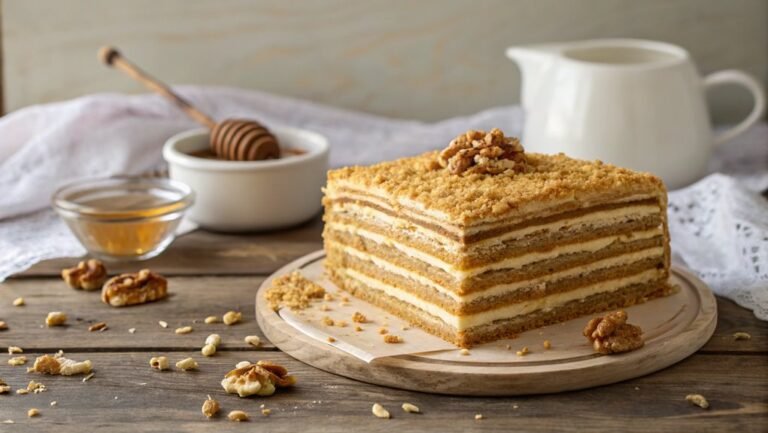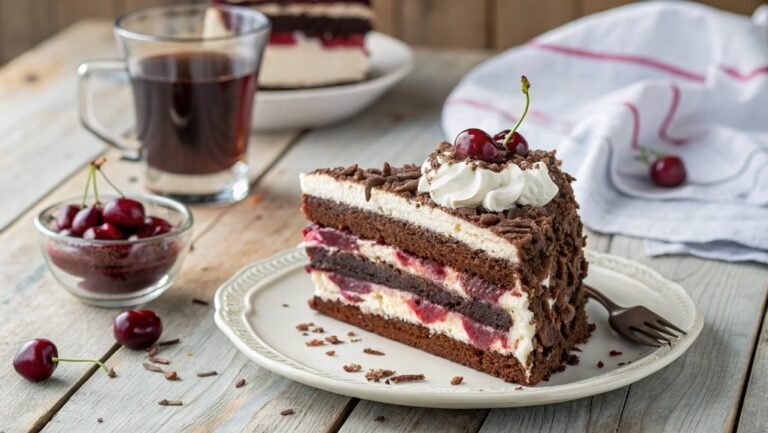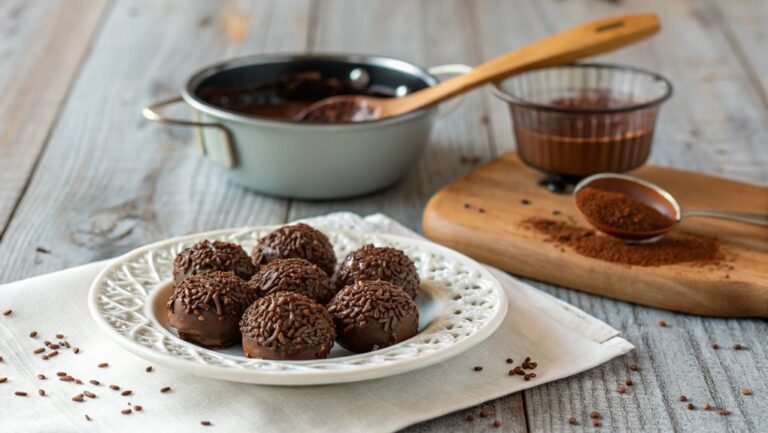Classic French Macaron Recipe
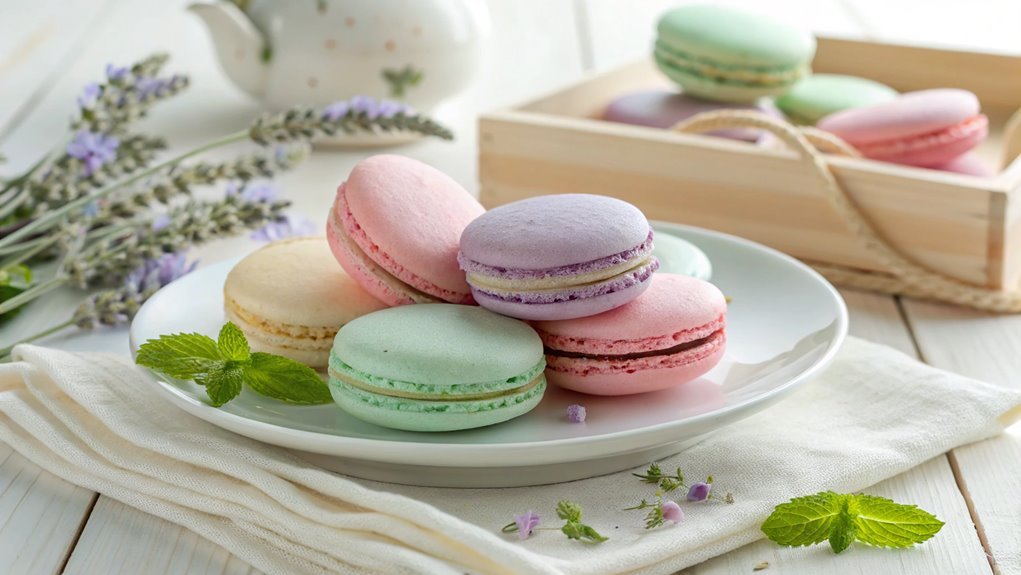
To master the classic French macaron, precise techniques are as crucial as the right ingredients. Rushing can jeopardize the signature smooth tops and feet, so take your time. Each step has subtle nuances that significantly impact the final product. Understanding these intricacies can mean the difference between a perfect and a disappointing macaron.
Recipe
French macarons are delicate and elegant meringue-based confections that consist of two almond meringue shells sandwiched around a creamy filling. These treats can be enjoyed in a variety of flavors, and their bright colors and impeccable texture make them a favorite among pastry lovers.
Although they may seem intimidating to make, once you get the hang of the technique, they can be a delightful addition to any dessert table. With a little practice and patience, you’ll have beautiful macarons that boast a crisp exterior and a chewy interior.
To begin your macaron-making journey, proper preparation is key. Start by gathering all your ingredients and tools before diving into the process, as this will help streamline your workflow.
It’s important to sift your almond flour and powdered sugar together to guarantee there are no lumps, as this will contribute to the smooth texture of your macarons. Additionally, familiarize yourself with the folding technique used when combining the meringue and dry ingredients to achieve the perfect batter consistency, which is essential for the macaron’s signature “feet” during baking.
Ingredients:
- 1 cup (100g) almond flour
- 1.5 cups (150g) powdered sugar
- 3 large egg whites, aged (about 2-3 days)
- 1/4 cup (50g) granulated sugar
- 1/4 teaspoon cream of tartar
- Food coloring (optional)
- Filling of your choice (buttercream, ganache, or jam)
Now let’s move on to the cooking steps.
Cooking Steps
Now that you’ve gathered your ingredients, it’s time to bring them together in the cooking steps for those delightful macarons!
You’ll want to measure the almond flour precisely and sift the powdered sugar thoroughly to guarantee a smooth batter.
With your egg whites whipped to stiff peaks, you’ll fold in the dry ingredients and let the batter rest briefly—this is where the magic happens, so let’s get started!
Step 1. Measure Almond Flour Precisely
Measuring almond flour precisely is essential for achieving the perfect macaron texture. If you want your macarons to have that light, chewy bite, you can’t skip this step!
First, grab a digital kitchen scale. It’s your best friend in this process. Weigh out 120 grams of almond flour, ensuring it’s accurate for fantastic results.
Next, if you only have pre-packaged almond flour, give it a gentle shake to break up any clumps. This will help you avoid inconsistencies in your batter. Remember, the texture can greatly impact the final outcome!
If you’re using whole almonds to make your flour, grind them to a fine consistency. It’s vital to avoid any larger pieces, as they can ruin your perfect macaron.
After measuring, make sure you feel confident about your almond flour choice. Choosing high-quality flour can elevate your macarons to a whole new level!
Step 2. Sift Powdered Sugar Thoroughly
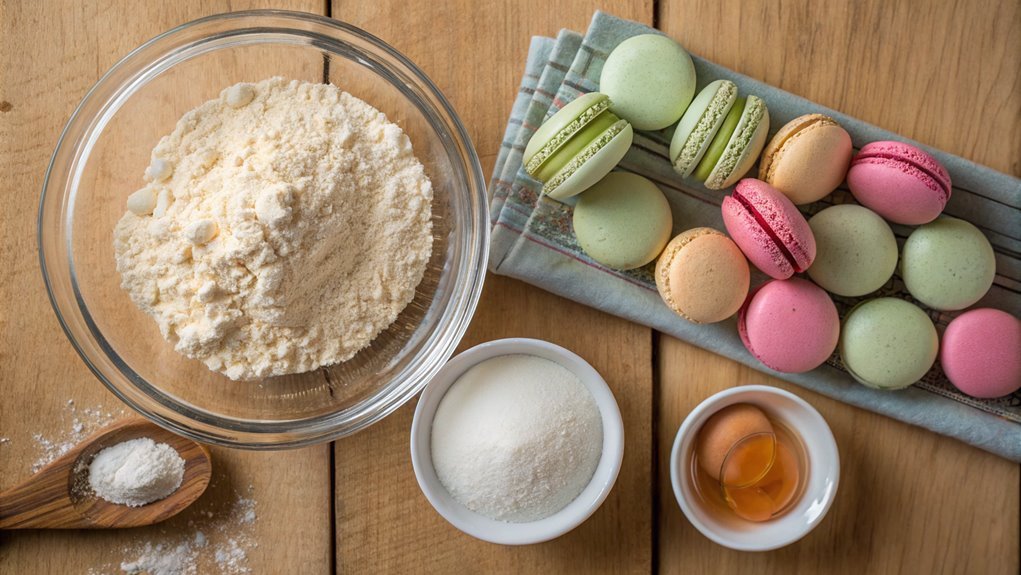
To achieve that delicate and light texture in your macarons, you’ll want to sift the powdered sugar thoroughly. This step is essential for guaranteeing your macarons turn out perfectly, with that iconic smooth shell and airy bite.
Start by measuring out the required amount of powdered sugar—make certain it’s precise for the best results. Place a fine sieve or a sifter over a large bowl and pour in the powdered sugar.
Now, gently shake the sifter back and forth, allowing the sugar to fall into the bowl. This process helps break up any lumps and combines it with the almond flour you’ll add later.
Sifting not only makes the sugar lighter but also guarantees even distribution, so your macaron batter is well-mixed and creates a beautiful, glossy finish.
Step 3. Whip Egg Whites to Stiff Peaks
Begin by cracking your eggs and separating the whites into a clean mixing bowl. This step is essential because the egg whites are the foundation of your macarons.
Now, grab your electric mixer and start whipping those egg whites. You want to beat them on medium speed until they start to foam up. At this point, you’ll gradually increase your speed, beating until they become glossy and start forming soft peaks.
Then, it’s time to add a pinch of salt and your granulated sugar, a little at a time. Keep whipping until you achieve stiff peaks—a glossy, firm meringue that holds its shape. When you lift the mixer’s whisk, the peaks should stand tall and proud!
Here are a few key tips to remember:
- Fresh egg whites whip better than older ones.
- Use a glass or metal bowl, as plastic might retain grease.
- Patience is key; take your time to achieve the perfect consistency.
This part of the process is where the magic begins—seeing those egg whites transform is incredibly rewarding!
Once you’ve mastered this step, you’re one step closer to those delightful French macarons you’ve been dreaming about.
Step 4. Fold in Dry Ingredients
Once your meringue reaches stiff peaks, you’re ready to fold in the dry ingredients, which include almond flour and powdered sugar. This step is essential, so let’s handle this gently.
Start by sifting the almond flour and powdered sugar together to remove any lumps. This guarantees a smooth batter and lovely macarons!
Now, take a big spatula and scoop off a portion of the meringue. Gently add it to the dry ingredients in a large bowl. Here’s where the magic happens: you’ll want to fold, not stir.
Use a technique similar to turning over a delicate blanket. Slide the spatula under the batter and lift it over the top, rotating the bowl as you go. Keep doing this until all the dry ingredients are combined with the meringue.
Feel the batter! It should be glossy and flow like lava. Don’t be tempted to overmix, as this could deflate your precious meringue.
The goal is to achieve a smooth batter that drops easily from the spatula. Enjoy the process, and get excited, because you’re one step closer to creating these enchanting little treats!
Step 5. Let Batter Rest Briefly

After you’ve gently folded in the dry ingredients, letting the batter rest briefly is an important step. This resting period allows the batter to relax, creating that perfect smooth texture you’re aiming for.
When the batter rests, it not only helps the flavors meld but also improves the macaron’s overall appearance when baked. You’ll notice a lovely, shiny finish once they’re out of the oven, thanks to this vital step.
Here are a few reasons why you don’t want to skip this part:
- Enhances Texture: Resting contributes to a better, more consistent texture in your macarons.
- Piping Ease: It makes the batter easier to pipe, leading to more uniform shapes.
- Reduces Air Bubbles: Giving the batter time to settle helps reduce unwanted air bubbles, guaranteeing perfect little domes.
Final Thoughts
As you savor your delightful French macarons, it’s important to appreciate the artistry and precision that goes into creating these treats. Each step, from whipping the egg whites to piping the delicate circles, plays an essential role in achieving that perfect texture and taste.
Don’t let the process intimidate you! With practice, you’ll master the technique and impress your family and friends with your confections.
Remember, the beauty of macarons lies not only in their taste but also in their vibrant colors and versatility. You can easily switch up the flavors and fillings to match any occasion or personal preference.
Whether it’s classic chocolate, zesty lemon, or enchanting lavender, the possibilities are endless.
Frequently Asked Questions
Can I Use Flavored Extracts in Macarons?
Using flavored extracts can transform your macarons into a culinary masterpiece. Just remember, it’s all about balance. Start with small amounts; you wouldn’t want to overpower those delicate flavors, would you? Enjoy experimenting!
What Is the Ideal Room Temperature for Making Macarons?
For making macarons, you’ll want to aim for a room temperature of around 70°F (21°C). This helps stabilize the meringue and guarantees the batter flows perfectly, giving you those coveted smooth tops.
How Do I Store Leftover Macarons?
To store leftover macarons, place them in an airtight container in the fridge. They’ll last up to a week. If you freeze them, wrap individually and enjoy them within three months for best taste.
Can I Freeze My Macarons?
Absolutely, you can freeze your macarons, but here’s the catch: if they’re not properly stored, they might lose their delicate texture. Just place them in an airtight container and enjoy them later.
What Should I Do if My Macarons Are Hollow?
If your macarons are hollow, it’s likely due to overmixing or inadequate whipping of the egg whites. You should adjust your technique, ensuring you’ve achieved the right consistency and that you’re incorporating air gently.
